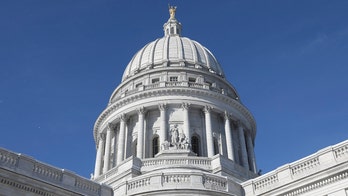Faced with no other viable option, Democrats are vowing to use a parliamentary process called reconciliation, if necessary, to complete President Obama's yearlong effort to reform the U.S. health care system.
Democrats increasingly have looked to reconciliation as viable option since Republican Scott Brown won a special election last month in Massachusetts to become the state's new U.S. senator, depriving Democrats of their 60-vote supermajority and sidelining the health care reform bills passed both the House and Senate late last year.
"Well, the avenue exists if one wants to pursue it," White House spokesman Robert Gibbs said Monday.
Rep. James Clyburn, the House majority whip, noted to Fox News that former President George W. Bush used the tactic to get his controversial tax cuts passed in 2001 and 2003.
Republicans acknowledge that reconciliation has a legitimate purpose but "it is not to pass a bill which is going to change 16 percent of the way our economy functions and everybody's health care delivery system," Sen. Judd Gregg of New Hampshire said.
Congress created reconciliation in 1974 to make it easier to raise taxes or cut spending to "reconcile" with a previously approved budget resolution.
For example, if Congress was running a higher budget deficit at the end of the year than projected, it could use reconciliation to quickly raise taxes or cut spending with just 51 votes in the Senate -- not the 60 votes it usually takes to avoid a filibuster.
Sen. Robert Byrd, D-W. Va., -- one of the original authors of the reconciliation rule created an additional hurdle in 1985 called the Byrd rule, preventing reconciliation's use for any "extraneous issue" that does not directly change revenue or expenditures.
But here's what would have to happen: The House would have to pass the Senate health care bill as it exists now -- with no changes. Then the House would simultaneously have to create a reconciliation vehicle -- a second bill -- that would make changes to send back to the Senate.
But this could only deal with taxes or budgetary changes. The following could not be changed by reconciliation:
Creation of health insurance rate authorities
Health care consumer protections
Changing individual or employer mandates
No social policy changes (i.e. abortion).
All are key elements in the new White House plan.
The Senate would have to then pass the additional bill with a simple majority of 51 votes.
But back to that first House vote on the existing Senate bill before any changes are made. The House passed health care reform by a vote of 220-215, and since then, Democrat John Murtha of Pennsylvania has died, Democrat Robert Wexler of Florida retired, Democrat Neil Abercrombie of Hawaii retired this week and Republican Joseph Cao of Louisiana has said despite a yes vote last time he will not vote for the bill this time.
That could make the vote 216-216, and ties fail in the House. Then there are 52 Bluedogs -- or fiscally conservative Democrats, 49 of them from districts won by John McCain in 2008. The numbers are not adding up yet for House passage.
Fox News' Bret Baier contributed to this report.




